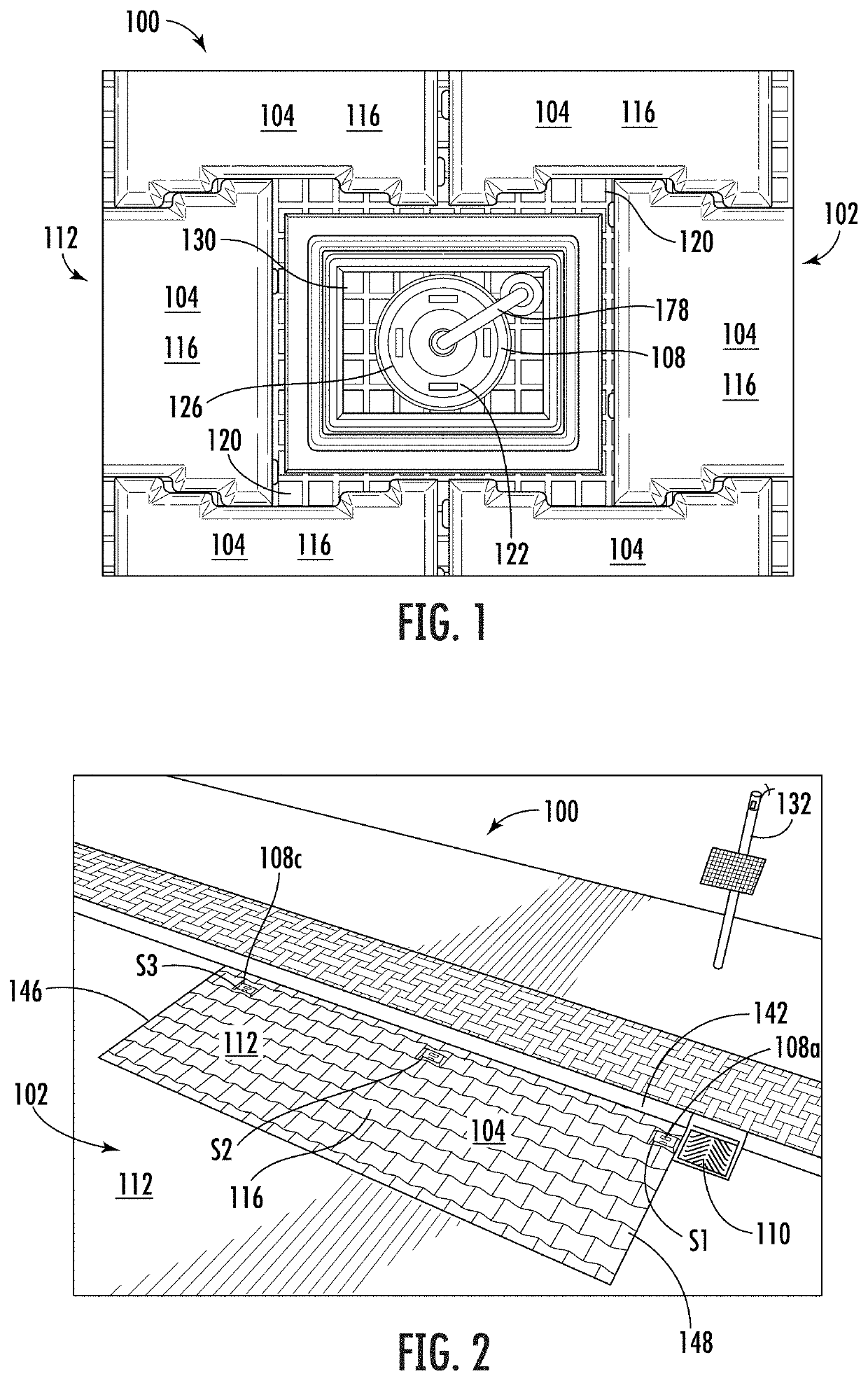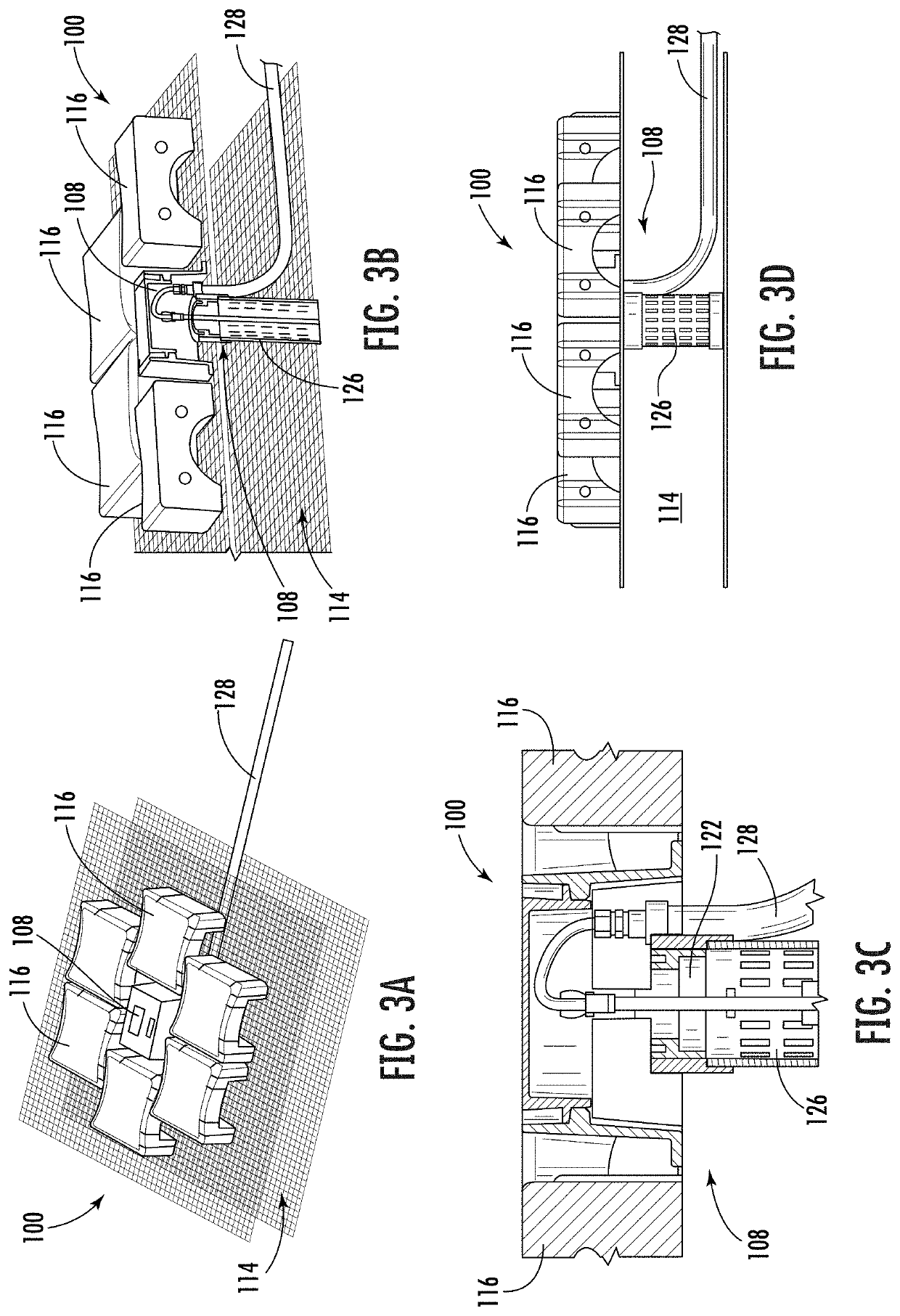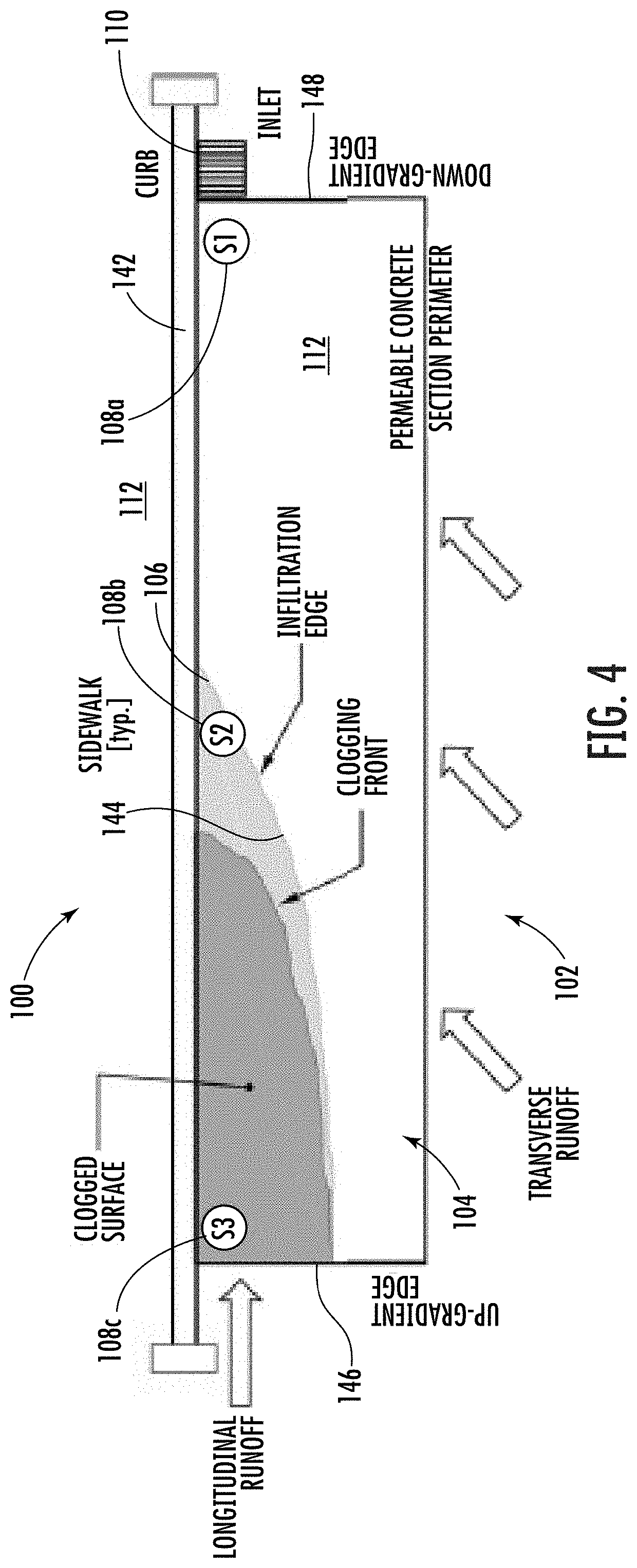Permeable Pavement Monitoring System
a sensor system and permeable pavement technology, applied in the field of infrastructure monitoring, can solve the problems of high cost of visual inspection-based maintenance, high cost and inability to effectively manage financial resources, so as to reduce the cost of visual inspection and maintenance evaluation, reduce the cost, and improve the effect of inspection and maintenance evaluation
- Summary
- Abstract
- Description
- Claims
- Application Information
AI Technical Summary
Benefits of technology
Problems solved by technology
Method used
Image
Examples
Embodiment Construction
[0039]FIG. 1 illustrates a permeable pavement application or system 100. An operator or user of system 100 desires to know where clogging is occurring. For example, the user of a plan area 102 with permeable pavement 104 considers vacuuming portions of a parking lot or traffic lane when clogged instead of the entire plan area 102, to reduce cost. However, vacuuming clogged plan areas 102, or a clog 106 utilizes high mobilization costs, for example, to send a truck to the location of the plan area 102, inspect the clog 106, and vacuum the clogged water and debris. A single float sensor 108 used to determine flooding in the low point, e.g., of a parking lot or immediately upstream of an inlet 110, senses and indicates the clog 106, but will not characterize how or where the clog 106 is occurring. The single sensor 108 only indicates that clogging has occurred, but fails to characterize how much or where the clogging occurred.
[0040]Up-gradient clogging has been recognized in permeable ...
PUM
 Login to View More
Login to View More Abstract
Description
Claims
Application Information
 Login to View More
Login to View More - R&D
- Intellectual Property
- Life Sciences
- Materials
- Tech Scout
- Unparalleled Data Quality
- Higher Quality Content
- 60% Fewer Hallucinations
Browse by: Latest US Patents, China's latest patents, Technical Efficacy Thesaurus, Application Domain, Technology Topic, Popular Technical Reports.
© 2025 PatSnap. All rights reserved.Legal|Privacy policy|Modern Slavery Act Transparency Statement|Sitemap|About US| Contact US: help@patsnap.com



